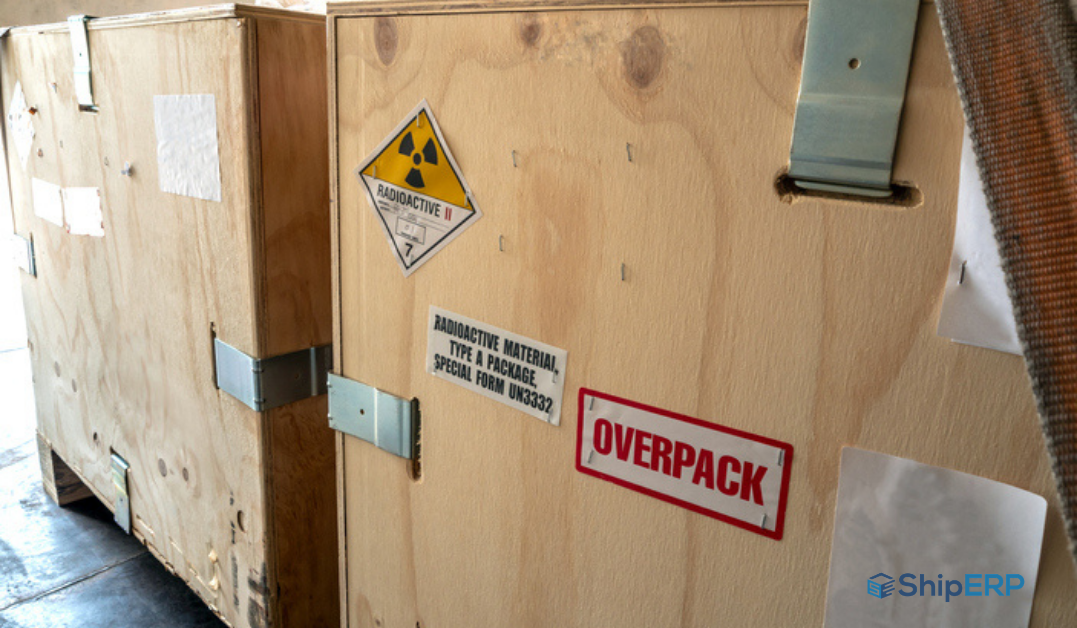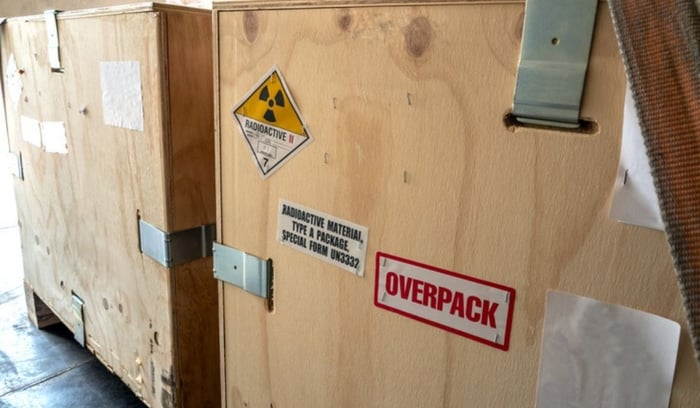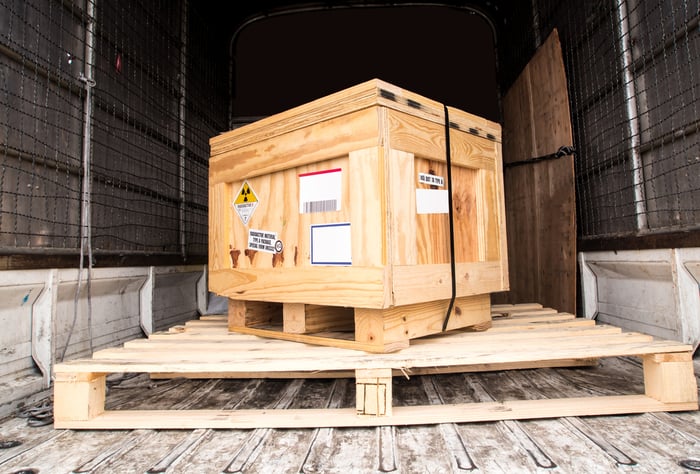
Helpful Tips For Dangerous Goods Shipping
Dangerous goods (DG) shipping, or hazardous materials, are outlined in Federal transportation law, code 49 U.S.C. 5103. The first step in DG shipping is determining if the goods you're shipping are hazardous.
What Are Considered Dangerous Goods When Shipping?
Every day, dangerous goods are packed and carefully shipped around the world. Since the definition of which goods are dangerous or not can change, DG shipping companies must adhere to federal and state regulations.
Items on this list include:
- Explosives
- Flammable gas
- Certain liquids and gases
- Pesticides
- Certain chemicals
- Etc.
Dangerous goods are materials that pose an unreasonable risk to a person's health and safety or property when transported.
How Do You Identify DG (Dangerous Goods) Goods?
DG shipping requires a complete identification of the goods before you can properly ship them to code. Some goods can be shipped via train, for example, while others can't be shipped due to their chemical composition.
Even items that seem harmless are dangerous goods, such as:
- Lithium batteries
- Dry ice
- Aerosol sprays
Vibrations and even changes in air pressure or temperature can make certain goods dangerous. When shipped on a plane, the change in air temperature and pressure can make the materials unstable. Proper handling can reduce these potential risks.
Classification of dangerous goods is based on the materials':
- Chemical properties
- Physical properties
The manufacturer should provide a standard Safety Data Sheet (SDS) that provides information on the transported goods. The SDS also outlines the transportation and DG shipping risks related to the materials.
Examples of Hazardous Materials
- Household cleaners
- Nail polish remover
- Oven cleaners
- Cooking sprays
- Perfumes
- Deodorants
- Lithium batteries
- Spray paint
- Pest control products
- Etc.
Of course, these are consumer items, and there are far more hazardous materials to be concerned about that will fall into one of the following categories:
- Explosives
- Gases
- Flammable liquids
- Flammable solids
- Oxidizers
- Poisons or toxins
- Radioactive materials
- Corrosives
- Misc. goods
Safely shipping these products is in the best interest of the manufacturers, consumers, and retailers.

Do You Need to Be Certified to Ship Dangerous Goods?
If you're going to ship dangerous goods in the United States, the Department of Transportation requires training and certification before you can ship dangerous goods. DG shipping requires that the goods be:
- Labeled. Proper labeling is required to ensure that those handling the goods know what the material is and that it is a hazardous material.
- Packaging. Proper packaging is required to reduce the risk that the material poses to anyone handling it.
- Documentation. There must be documentation so that the shipper, handler, and receiver understand that the transported goods are dangerous.
Training is required for all HAZMAT employees to reduce HAZMAT incidents, raise safety awareness and increase team member safety.
Requirements Based on Mode of Transportation
Here's what you need to do in order to conduct DG shipping based on your required transportation mode:
- Air: You must provide certified training to the employees handling the dangerous goods in handling hazardous materials.
- Rail: The Federal Railroad Administration governs the industry with strict regulations. Safety initiatives are in place, along with training, security, emergency response, and even tank car design to keep HAZMAT materials safe during transport. Due to these strong safety measures, 99.99% of all rail shipments reach their destination without any incidents.
- Trucking: The transportation of HAZMAT goods via highways is highly regulated, requiring that truck drivers obtain their HAZMAT endorsement. There are strict requirements on maneuvers that your employees can perform during the transport, loading, and unloading techniques and vehicles used to transport dangerous goods.
- Ocean: Maritime transportation requires that the shipper complies with all federal hazardous materials regulations. You must follow domestic and international codes, and the shipper must stow, segregate, package, classify and communicate.

What Are the Top Tips for Shipping Dangerous Goods?
DG shipping can be made safer with the right experience and training. A few of the many tips that can go a long way in ensuring that your goods reach their destination safely are:
Keep Up with Regulations.
It's essential to follow all federal procedures and protocolsfor DGshipping. Federal agencies have strict regulations that work to keep goods safe and secure in transport.
Educate Yourself.
As a shipper, you must know and understand the nature of the materials that you're transporting. It's important to know that certain materials are flammable, acidic, create toxic fumes, harm the environment, interact with water, etc. Knowing the nature of the transported goods will make transportation safety even better.
Follow Packaging Protocols & Procedures.
Packaging is essential for all types of cargo, but when dealing with hazardous materials, it's even more essential to package the materials adequately. When packaged among other items, the hazardous materials should be easily accessible and accessed rapidly if an emergency occurs.
It would be best to make sure that the packaging is appropriately labeled and suitable for the goods you're shipping. You must also use proper documentation and labeling. Shippers should have strict protocols to ensure that HAZMAT materials are shipped as safely as possible.
How To Best Follow Compliance When Shipping Dangerous Goods?
DG shipping requires you and your employees to be fully compliant when shipping dangerous goods. Following compliance best practices can be done by:
- Training and retraining employees to keep certifications current
- Making sure you create a full declaration of goods onDGshipping papers
- Obtaining material safety data sheets on the materials that you'll be shipping
- Putting protocols and procedures in place to make sure labeling and packaging is accurate
Shippers want to be sure that they have strict oversight and procedures in place for DG shipping. Maintain detailed DG shipping records and ensure that the packaging used is tested and certified for the goods in question.
Automate Your HAZMAT Processes: ShipHAZ
With many rules and regulation to keep in mind, it can be a tricky process to ensure accurate labeling and packaging of your dangerous goods. Lucky for you, ShipHAZ makes it all easy. With a hazardous materials compliance software, you'll automatically generate the right labels, forms, and codes. You'll save time and money with ShipHAZ!
Kick back and relax knowing that you're compliant with the Hazardous Materials Transportation Act. Execute your DG shipping with ease. Sign up for a free product demo of ShipHAZ today!
For more information on hazardous materials and DG shipping, check out these resources:


